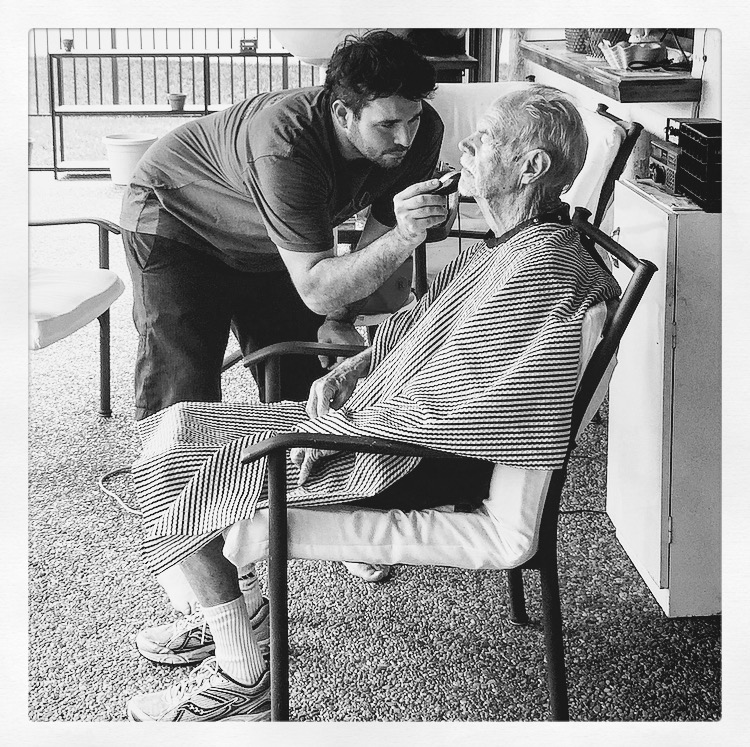Long-Term Care: Assessing Your Needs and Planning to Pay
Have you given consideration to your long-term care needs? Have you created a plan for how to pay for it? The cost of health insurance during our healthiest of years is already reaching harrowing rates. But what about those days (hopefully distant future) when we need a bit of extra help. If it’s expensive now, we can assume it will be even more costly then. Fortunately, Harry Cline, creator of NewCaregiver.org and author of the upcoming book, The A-Z Home Care Handbook: Health Management How-Tos for Senior Caregivers is here to help us with some of these questions. Read below for some suggestions on how you can start to think big pictures for what long-term care might look like for you or your loved ones.
While it isn’t pleasant to think about, there is a good chance you will need some type of long-term care in your senior years. Long-term care doesn’t necessarily mean you’ll be put in a nursing home. In fact, assisted living facilities and nursing homes are more expensive than in-home care. Long-term care simply means any sort of custodial care you’ll need for more than two months, whether that be admittance into an assisted living facility, adult day care, or an in-home health aide.
Planning for Long-Term Care Needs
To assess the likelihood of your needing long-term care in the future, take a look at your state of health. Does your family carry any hereditary illnesses or conditions that could show up down the line? Fortunately, there are now predictive genetic tests that you can take to catch some of these early. However, it’s important to know that carrying a condition like Alzheimer’s means you won’t be eligible for long-term insurance.
Barring genetic issues and accidents, your health is largely in your own hands. If you don’t already lead a healthy lifestyle that promotes longevity, make a resolution to change as soon as possible. One of the best things you can do for your long-term health is exercise regularly. You only need 90 minutes of exercise a week to reduce blood pressure levels. Exercise 450 minutes a week, and you’ll significantly reduce your chances of premature death.
As mentioned earlier, in-home care can be significantly cheaper than an assisted living facility or nursing home. If you are part of the 87 percent of adults who wish to age-in-place within their own home, it’s important to make sure the house facilitates that. Either find a home that has accessibility features in place or budget to make the renovations yourself. You’ll need to make modifications such as installing railings on both sides of stairs, removing any loose carpeting or rugs, and changing to automatic night lights.
Paying for Long-Term Care Needs
The further you are from retirement, the more options you have when it comes to saving for long-term care. An easy way to make sure you’ll have the funds no matter what is by investing in long-term care insurance. Long-term care insurance is expensive for a reason. Insurance companies know just like the rest of us that healthcare costs are rising steadily, as is the aging population. The chances of someone needing to actually use that insurance is pretty high, thus the high premium.
Another option you have when it comes to saving for your long-term needs is a Health Savings Account (HSA). a Health Savings Account is a compound interest savings program that allows you to contribute a certain amount monthly without having to pay taxes. The funds can be used on a variety of healthcare costs, including custodial care. The best part about an HSA is you can access the funds tax-free for everything from acupuncture to X-rays. If you want to access the funds for any other purchases, you can do that as well! Just be prepared to pay taxes on it.
Long-term care isn’t necessarily as scary as it sounds, but it is serious business. The costs of healthcare are rising every day, so it’s something you need to plan for. When assessing your risk of needing long-term care, there are predictive genetic tests you can take. However, your best bet is reducing your chances of needing long-term care with a healthy lifestyle that includes exercise. If you prefer the idea of in-home care over being admitted to an assisted living facility, you have to make sure your house is ready with accessibility modifications. To pay for your long-term care needs, you can invest in insurance. However, this is an expensive option and ultimately useless if you end up not needing it. A Health Savings Account, on the other hand, allows you to save thousands a year and benefit from its tax-free status and compound interest to pay for long-term healthcare costs when the time comes.
Do any of you have experience with a Health Savings Account? It has only recently popped up on my radar but after struggling financially to afford life crippled under my parents health, let alone my own healthcare, I’m developing a budding interest in all things financial. Share your experience affording care in the comments. Many of us new to caregiving are clueless about this stuff so your input is extremely valued here.

